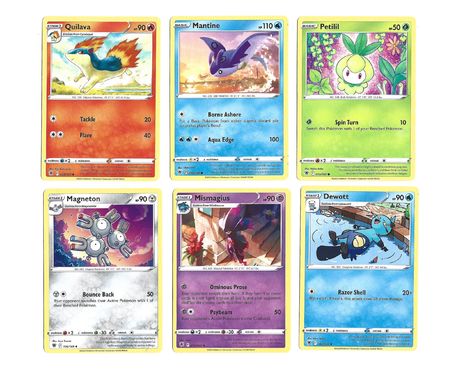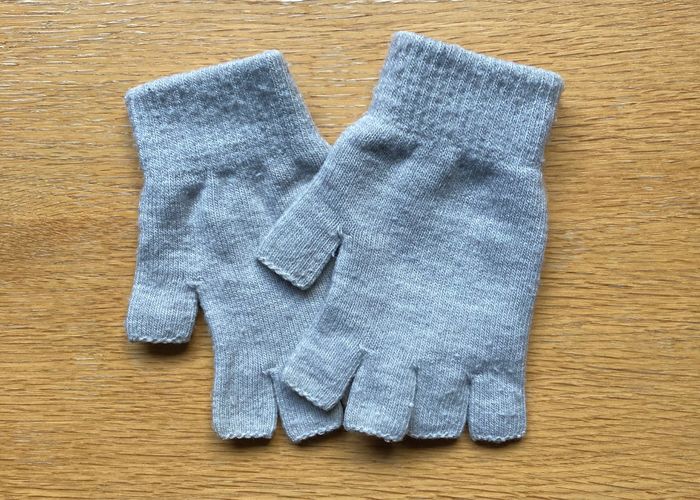‘Knick-knacks’: Pokemon cards
Memories, friendships, and the impulsion to collect and preserve the things we love are touched upon in this instalment of Eve Connor‘s column, inspired by an encounter with a trail of collectable cards

Stumbling half an hour to return one unflattering shirt at the In-Post locker outside a Tesco Superstore, scrounging around the pavement after a trail of discarded Pokémon cards. These could easily constitute the unexciting points of life, but in the company of a friend they translate into impeccable adventures. Sacha and I marvelled at the heart two swans made with their necks outside the Combined Colleges Boathouse, the sort of event restricted to wedding cards or GCSE poetry anthologies. We took revitalising swigs from our Tymbark bottles (apple mint flavour) as the sky spat the intermittent dribble too light for hoods or umbrellas but irritating enough to wreak havoc on a fringe. Across the common, a man worked a patch of churned earth with a metal detector. We sidled over to the laminated A4 sheet erected at the border of his site. It read: METAL DETECTION ONGOING. Unfortunately for him, the great discovery of the day was ours.
“I find the circumstance of a photograph almost as important as the content”
The first card had been a joke. Sacha fished the navy-backed rectangle out of the grass and we laughed, feeling pleasantly guilty. “The kid’s going to kick themselves when they get home,” we agreed. The second card, about a foot ahead, represented good fortune because it meant we could split the anecdote, one card each. The third and fourth followed, then the fifth and sixth, and look – the seventh, eighth, and ninth! Around the tenth card I began to envision a white van and a plot to kidnap Bulbasaur-inclined children foiled by a pair of soggy uni students. We farmed 20 Pokémon cards in total and halved the spoils. “You know,” I said, “I used to collect these when I was younger.”
The preservation instinct developed in me early. My nursery ran a burger day and I became so attached to mine that I wouldn’t let my dad bin it, even though I shunned the taste of burger then. I used to rescue toys from gutters and clean them up in the sink. I called it my Lost Toy Hospital. I remember a McDonalds Surf’s Up penguin detached from its plastic surfboard, the overwhelming pathos of it. A few years ago, I bought a tiger hugged clean of stripes from a market; on a Sunday in Berlin, Julian Barnes’ The Noise of Time materialised atop a postbox while I was bemoaning the closure of English-language bookshops, and the habit returned.
“The joy of scrapbooking is its patience”
My most intentional and long-running collection is my box of old photographs. I restrict myself to shopping in-person because the wealth of online material is ceaseless and would suck the spontaneity out of it. Besides, I find the circumstance of a photograph almost as important as the content. I once tried to slip a shot of a man with his trousers unzipped – I liked the amateur concentration, the affected carelessness – underneath an elderly gent playing croquet and a woman rowing in a summer dress, only for the lady at the till to hold him up and nod sagely, “thinks he’s James Dean.” The soldier stationed at the base of a frozen mountain belongs to a church sale opposite the gaol where a Christian martyr languished before they tied him to the stake.
The subjects of my photographs were all, to my knowledge, alive at the time they were fixed but Lili Hamlyn has written powerfully about post-mortem photography. She quotes from Camera Lucida by Roland Barthes, for whom a picture of the dead “certifies, so to speak, that the corpse is alive, as corpse: it is the living image of a dead thing.” Barthes wrote the book after the death of his mother. Hamlyn’s “infatuation” with Stanley B Burns’ post-mortem portraits attended her own loss, a way “of keeping death close”.
“And what is friendship but another ecosystem, buzzing with in-jokes, secret codes, and memories, repeated and reframed with every meeting?”
Although the impulse to preserve what is going or gone is strongest towards our loved ones, it crops up in more abstruse settings too. The joy of scrapbooking is its patience. Whether hunting for Pokémon cards or metallic treasures, collections ought to slow you down. Mandy (@paperofthepast) shares excerpts online from her “mini-archive” of 500 plus scrapbooks. In one post, she praises a photographic fragment on a page from the 1920s, accompanied by an envelope, several gum packets, and a paper heart. “I don’t know what it’s showing,” Mandy writes, “but I like the idea of it.”
I like the idea of it has pursued my thoughts since I saw the post, most recently regarding the dollhouse-esque work of Anne Buckwalter, displacing the human body to a doorway or an anatomy textbook or maybe just an impression, like WB Yeats’ Memory: “the mountain grass / Cannot but keep the form / Where the mountain hare has lain.” Buckwalter’s art unfolds with wonderful texture. I feel as though I could pour myself into the gouache at the same time as its blank sexuality checks me. Like my photographs, these are private, half-living worlds.
And what is friendship but another ecosystem, buzzing with in-jokes, secret codes, and memories, repeated and reframed with every meeting? As Sacha and I clinked our bottles in celebration, the germs of this analogy had taken root and I retrieved my phone camera to publicise, at least on my Instagram story, the new territory between us.
“What’s your favourite card?” I asked.
Sacha considered the question, shuffling through their collection.
“Trekking shoe.”
 News / Cambridge bus strikes continue into new year16 January 2026
News / Cambridge bus strikes continue into new year16 January 2026 News / Uni members slam ‘totalitarian’ recommendation to stop vet course 15 January 2026
News / Uni members slam ‘totalitarian’ recommendation to stop vet course 15 January 2026 Science / Why smart students keep failing to quit smoking15 January 2026
Science / Why smart students keep failing to quit smoking15 January 2026 Interviews / The Cambridge Cupid: what’s the secret to a great date?14 January 2026
Interviews / The Cambridge Cupid: what’s the secret to a great date?14 January 2026 News / Cambridge local elections to go ahead in May despite local government reorganisation16 January 2026
News / Cambridge local elections to go ahead in May despite local government reorganisation16 January 2026









